30 Most Brutal Torture Techniques Ever Devised In History
1
Hanged, Drawn and Quartered

During medieval times, the penalty for high treason in England was to be hanged, drawn and quartered in public and though it was abolished in 1814, it has been responsible for the death of thousands of people. In this torture technique, the victim is dragged in a wooden frame called a hurdle to the place of execution. They would then be hanged by the neck for a short period of time until they are near-death (hanged), followed by disembowelment and castration where the entrails and genitalia are burned in front of the victim (drawn). The victim would then be divided into four separate parts and beheaded (quartered).
2
Saw Torture

In this method, the victim is hung upside down, so that the blood will rush to their heads and keep them conscious during the long torture. The torturer would then saw through the victims’ bodies until they were completely sawed in half. Most were cut up only in their abdomen to prolong their agony.
3
Spanish Donkey
4
The Breaking Wheel

Also known as the Catherine Wheel, this is a torture device use to slowly kill the victim. First, the victim’s limbs were tied to the spokes of a large wooden wheel which would then be slowly revolved as the torturer simultaneously smashed the victim’s limbs with an iron hammer to break them in numerous places. As the bones were broken, the victim would be left on the wheel to die or could be place on top of a tall pole so the birds could feed on their flesh while still alive. This was slow indeed since it could have taken days before the victims would die from dehydration. Sometimes, a coups de grace (blow of mercy) was employed by ordering the executioner to deal a fatal blow on the victim’s chest and stomach to end their agony.
5
Republican Marriage

Besides the guillotine and burning at the stake, this act of torture was employed by Jean-Baptiste Carrier during the French Revolution. It involved binding naked males and females together and then throwing them into icy waters to drown. When water was unavailable, they would just be run through with swords or bayonets. This was the preferred method used to execute nuns and priests during that time.
6
Crocodile Shears

Often used to mutilate those who would attempt to assassinate the king, this iron pincer was heated red-hot before being used to clamp down on the victim’s appendages and tearing them from their bodies.
7
Breast Ripper

Though women were also subject to many of the torture techniques on this page, this is one that was specifically designed for them. Used to cause major blood loss, the claws, which were often red hot, would be placed on the exposed breasts as the spikes penetrated beneath the skin. It would then be pulled or jerked causing large chunks of flesh to come off with it.
8
Cement Shoes

The cement shoes were introduced by the American Mafia when they executed enemies, traitors and spies by placing their feet inside cinder blocks and then filling them up with wet cement. Once it dried, the victim would be thrown alive into a river or other deep body of water.
9
The Chair of Torture

Also known as the Judas Chair, it was a terrible, intimidating torture device that was added to dungeons in the Middle Ages. Used until the 1800′s in Europe, this chair was layered with 500 to 1,500 spikes on every surface with tight straps to restrain its victim. Made of iron, it can also contain spaces for heating elements beneath the seat. It was often used to scare people into giving confessions as they watched others being tortured on the device.
10
Rat Torture

Being in an enclosure with rats is torture enough; but apparently, this is not enough for medieval times. One of the most sadistic of all torture techniques involved having a cage with one open side strapped against the victim’s body. It would then be filled with large rodents and a heating element which would be placed on the other side of the cage. The rodents’ natural instinct led them to flee the intense heat. In order to escape they would burrow through the victim’s body with fatal results.
11
Tongue Tearer

Looking like an oversized pair of scissors, it could effortlessly cut the victim’s tongue. Their mouth would be forced opened with a device called a mouth opener, and then the iron tongue tearer would uncomfortably twitch the tongue with its rough grippers. Once a firm hold was maintained, the screw would be firmly tightened and the victim’s tongue would roughly be torn out.
12
The Rack

Designed to dislocate every joint of the victim’s body, it was believed to be the most painful form of medieval torture. This torture device was made out of a wooden frame with two ropes fixed to the bottom and the other two tied into the handle on top. Once the victim was bound and placed on top of the rack, the torturer would proceed to turn the handle. Eventually, the victim would be stretched till his limbs where dislocated. The torturers, however, (just to make sure those limbs where indeed dislocated) would continue to turn the wheel until the limbs where completely torn off the victim’s body.
13
Guillotine

One of the most notorious forms of executions, the guillotine was made of a razor sharp blade attached to a rope. The victim’s head was placed in the middle of the frame as the blade dropped, severing the victim’s head from the body. Since the decapitation was considered to be an instant and painless event (at least less painful than the other torture methods), it was often considered the most humane method of execution
14
Rope Torture

A rope is the easiest to use of all the torture devices since it is easy to find and can easily be fashioned to inflict a number of terrible retributions. For example, it could be used to tie the victim to a tree leaving the victim exposed with no way of defending himself from animals or other humans; it could be used to hang victims at the gallows for entertainment purposes while ultimately inflicting death; and it could be fashioned to restrain the victim’s limbs while attaching the other end to horses who would them be made to run, consequently severing the limbs.
15
Thumbscrew

Though there are many variations of this torture device, the thumbscrew or ‘pilliwinks’ all function the same. They were designed to slowly crush not only the fingers and toes, but larger devices were also used to crush knees and elbows. There is also the Head Crusher, which could do the same for heads. It’s primary intention was to extract confessions from victims and it was first used in medieval times.
16
Impalement
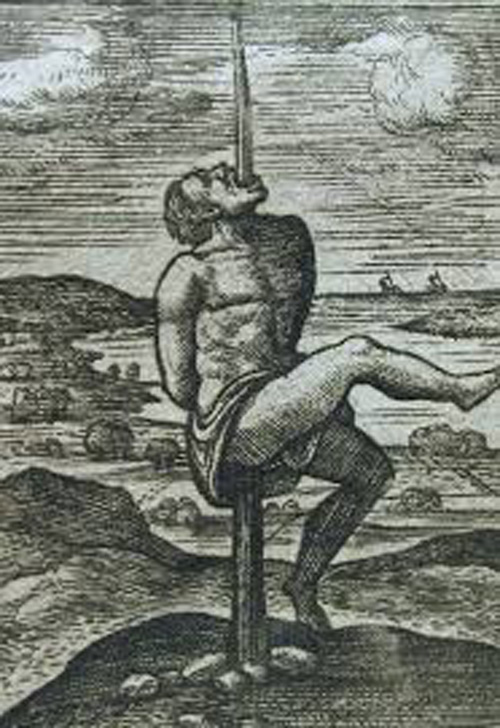
Impalement by pike, pole, spear, hook or stake was not only fairly common, it was also popular during the middle ages. Especially people convicted for treason or ‘crimes against the state’ would be punished like this. And people did invent many devices to execute this method of punishment. Different orifices of the body would be penetrated for different crimes in this gruesome method though all of those eventually led to a very painful death.
25
Crushed under an elephant
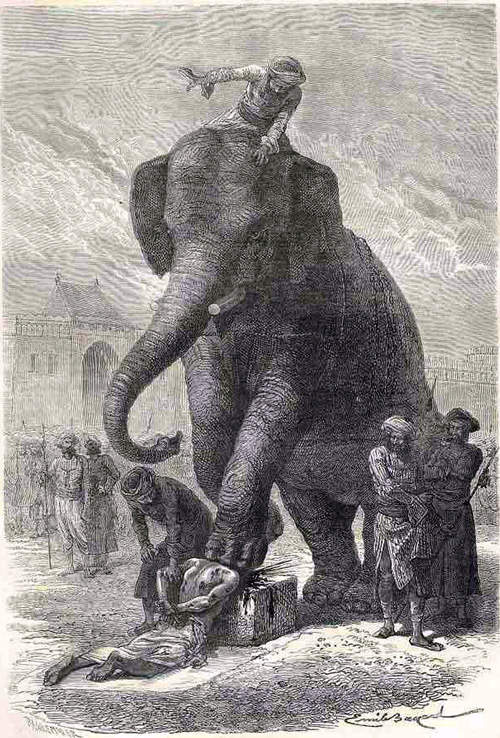
Capital punishment by the convict’s head being crushed under an elephant was a very popular method in ancient India, and also in other parts of South East Asia. Elephants were trained to kill their victims immediately or to torture them slowly over a period of time in this public spectacle. Sometimes (believe me, rarely) the elephants were made to just dismember the convict and not completely kill him
18
Coffin Torture

The most preferred torture technique in the Middle Ages was known as coffin torture. This method involved placing the victim inside a metal cage roughly the size of the human body; hence the name. The torturers also forced overweight victims into smaller cages to heighten their discomfort as they hung from a tree or gallows. Generally, they would be left there until the crows came to feed on their remains .
19
Iron Maiden

This torture device consisted of an iron cabinet with a hinged front and spike-covered interior, sufficient enough to enclose a human being. Once inside its conical frame, the victim would be unable to move due to the great number of steel spikes impaling them from every direction. The interrogator would scream questions at the victim while poking them with jagged edges.
20
Lead Sprinkler

Usually filled with molten lead, tar, boiling water or boiling oil, it was used to torture victims by dripping the contents onto their stomach or other body parts like the eyes. Using this device the torturer would proceed to pour molten silver on the victim’s eyes which resulted in agonizing pain and eventual death.
21
The Judas Cradle

Closely related to impalement, this gruesome punishment entailed having the victim sit on the pyramid-shaped cradle, after which they would be forced down on it by ropes with the intent of stretching the victim’s orifice over a long period of time, slowly impaling them. To add to the overall humiliation, the victim was usually naked and the device was rarely washed. So if the torture did not kill you, the infection contracted from it would.
22
Crucifixion

Principally practiced in antiquity, though it remains practiced in some countries today; it is one of the most well-known execution methods due to the crucifixion of Jesus Christ. It is a deliberately slow and painful execution where the condemned person is tied or nailed to a large wooden cross and left to hang until they die, which usually takes days.
23
Neck Torture

Humiliating and painful, this punishment was something of an endurance test where the victim would be hooked into a neck device, either made of metal or wood, which prevented the victim from adjusting into a comfortable position. The cruelty of this punishment lie within the fact that they were unable to lie down, eat, or lower their head for days!
24
Heretics Fork

This torture device consisted of a metal piece with two opposed bi-pronged forks attached to a belt or strap. One end of the device was pushed under the chin, the other to the sternum, and the strap was used to secure the victim’s neck to the tool while the victim hung from the ceiling or was somehow suspended so that they could not sleep. If their heads dropped, the prongs would pierce their throat and chest.
25
The Brazen Bull

Also known as the Sicilian Bull, it was designed in ancient Greece. A solid piece of brass was cast with a door on the side that could be opened and latched. The victim would be placed inside the bull and a fire set underneath it until the metal became literally yellow as it was heated. The victim would then be slowly roasted to death all while screaming in agonizing pain. The bull was purposely designed to amplify these screams and make them sound like the bellowing of a bull.
26
The Tub

Known as the punishment of ‘sitting in the tub,’ the convicted person would be placed in a wooden tub with only their head sticking out. After that, the executioner would paint their faces with milk and honey; and soon, flies would begin to feed on them. The victim was also fed regularly and would end up swimming in their excrement. After a few days, maggots and worms would devour their body as they decayed alive
27
Death by a Thousand Cuts(Ling Chi)
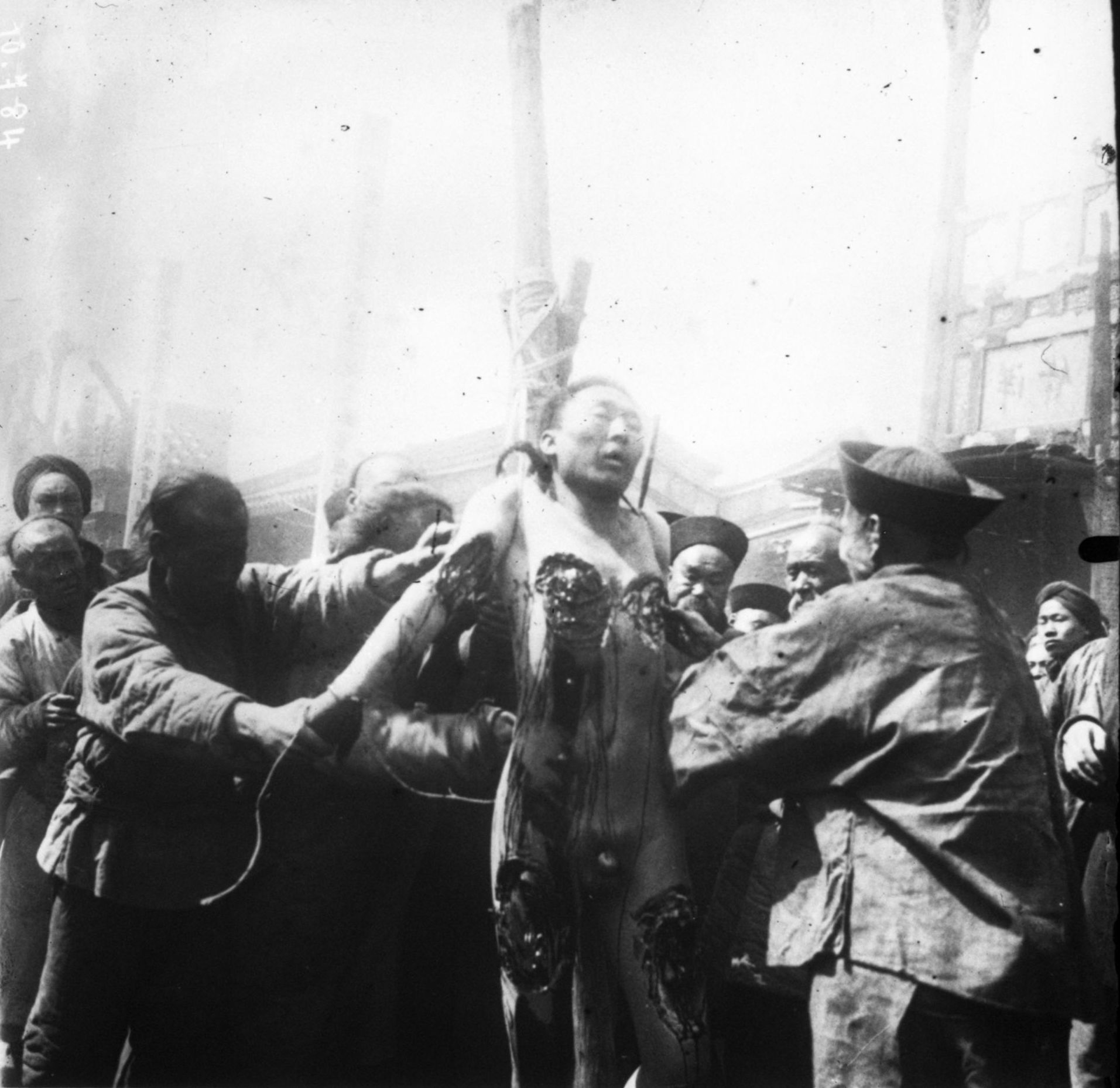
Death by a thousand cuts(1910, Bibliothèque nationale de France)
The victim was tied to a wooden frame, usually in a public place.. The flesh was then sliced from the body, at first only from victim’s breasts and thigs. Then his limbs were gradually amputated, followed by ears, nose and genitals. After 10-20 minutes, victim was decapitated or stabbed to the heart. During the execution, opiumwas sometimes administered as an act of mercy.
28
Raped by wild animal to death
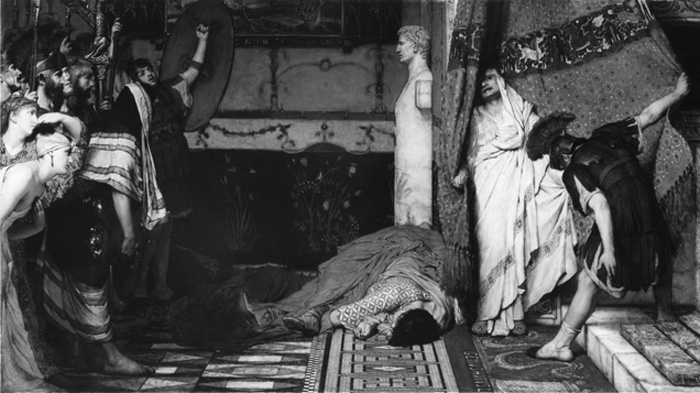
In the ancient Roman empire, people loved a good show. And nothing makes a better show than seeing animals mauling people to death. Especially if it happened to be a woman, then she would be raped by ‘specifically’ trained wild animals, till she succumbed to death, like poor Locusta’s fate made her endure.
29
Cropping of ears
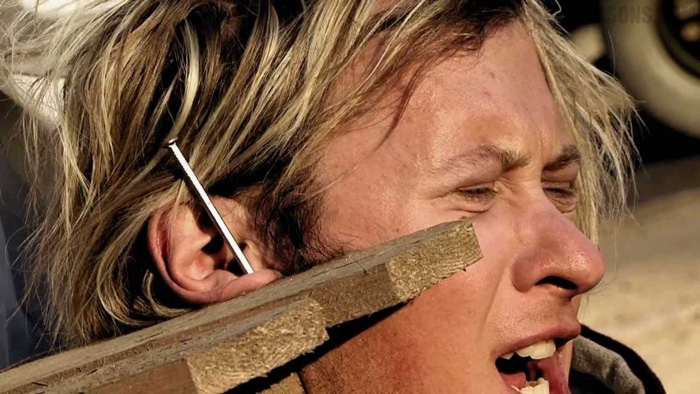
As it was described in the Hunchback of Notre Dame, this particular punishment was executing by cropping the ears of people. And sometimes, if the crime was not too grave, their ears would simply be nailed to the pillory for some time. In most cases, this punishment didn’t kill the convicted, save the cases where they died because of later infection of the wound.
30
Burning at the stake
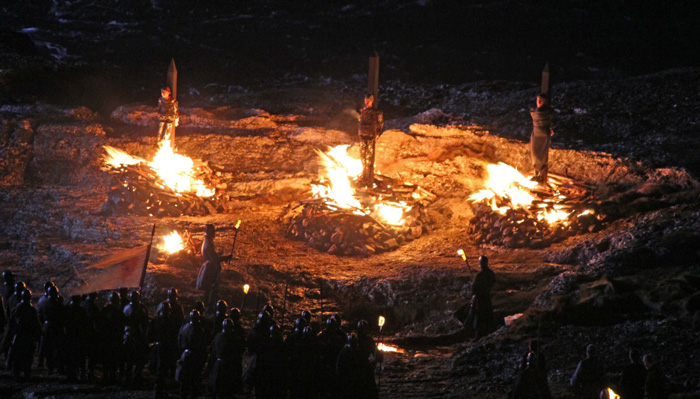
People in early ages loved a good fire, and what better ways to light a fire than to burn a person at the stake? This one of the most favourite modes of punishing people accused of treason or witchcraft, as it made a grand spectacle and also warned people against committing such crimes.










No Comments